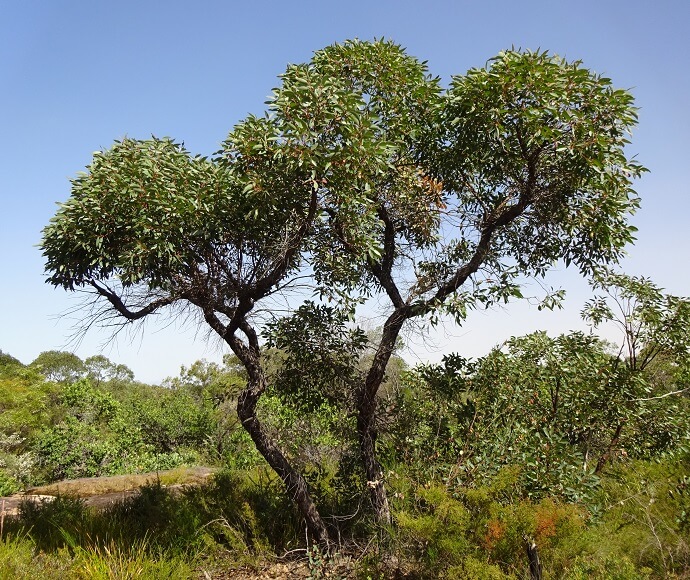12 wins for conservation in 2023
Saving our Species has much to celebrate in 2023, with plenty of new and exciting achievements, and outcomes in our work to protect NSW's precious biodiversity.
It’s hard work protecting and conserving threatened species. The dedicated and passionate Saving our Species team and their brilliant partners face some difficult challenges. Despite the tough and ongoing work to secure a future for our native plants, animals and ecological communities, the team continue to persevere and overcome obstacles to achieve incredible results.
While there have been a lot more than 12 wins this year, here are just a few threatened species success stories from 2023 to look back on and put a smile on your dial.
Regenerating a vulnerable orchid through a cultural burn
For the first time in 50 years, fire has touched some of the highest parts of Barrington Tops on Worimi country to regenerate the Bularr-Gulga Watuun (Diuris venosa), a vulnerable double-veined donkey orchid endemic to the subalpine grasslands of the mountains.
The event was led by Worimi Elder Aunty Michelle Perry and took place in spring on the Biyan Biyan plain in the shadows of Mount Barrington, with nearly 60 people participating in the 2-hectare snow grass burn.
It is believed to be the first fire here since the mid-1970s, and potentially the first community-led cultural burn since colonisation.
It is hoped the fire will promote the growth of the Bulgarr-Gulga Watuun (‘2 tailed white one’ in the Gathang language) so that its tubers can be sustainably harvested as part of the Grow, Harvest, Heal project.
The burning project was done in partnership with NSW Biodiversity Conservation Division – Hunter Central Coast, National Parks and Wildlife Service Hunter Central Coast branch & Barrington area staff, the NSW Environmental Trust and Yarrabin Fire.
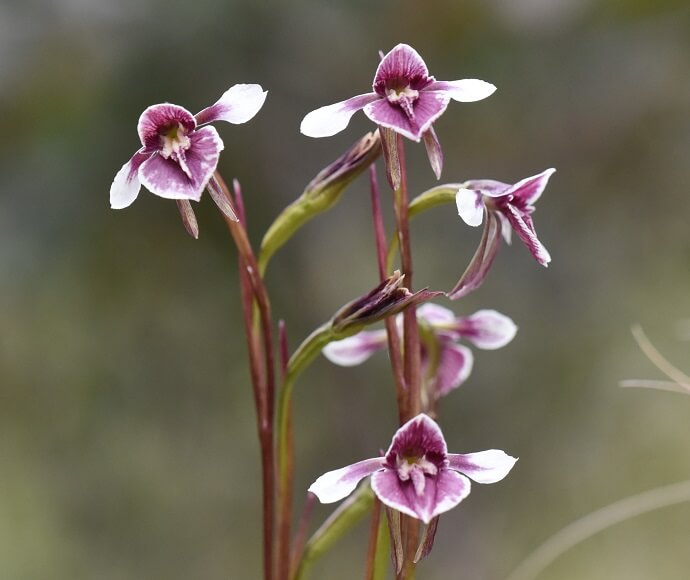
How the Cooma Men’s Shed helped endangered dragons
Down in the native grasslands of the Monaro in southern New South Wales (on Ngarigo country) dragons abound. Not fire-breathing, mythical creatures, but tiny yet fierce endangered Monaro grassland earless dragons (Tympanocryptis osbornei).
For many years, the little dragons have lived in these grassy ecosystems, but due to a decline in the habitat from weeds, management pressures and extreme climatic cycles, the species has become endangered, and risks extinction.
In May of 2023, members of the Cooma Men’s Shed, together with the Saving our Species team, created artificial spider hole habitats for the little dragon species. These replicas of spider burrows are being placed in paddocks across the region to not only provide safe refuge for the dragons, but to help the team conduct surveys for the species without impacting on important natural habitat.
This collaborative effort between Saving our Species and the local community will go a long way towards understanding the distribution and habitat requirements of these small but spectacular dragons.
Meet the oldest earless dragon and read on about the Cooma men’s shed workshop.
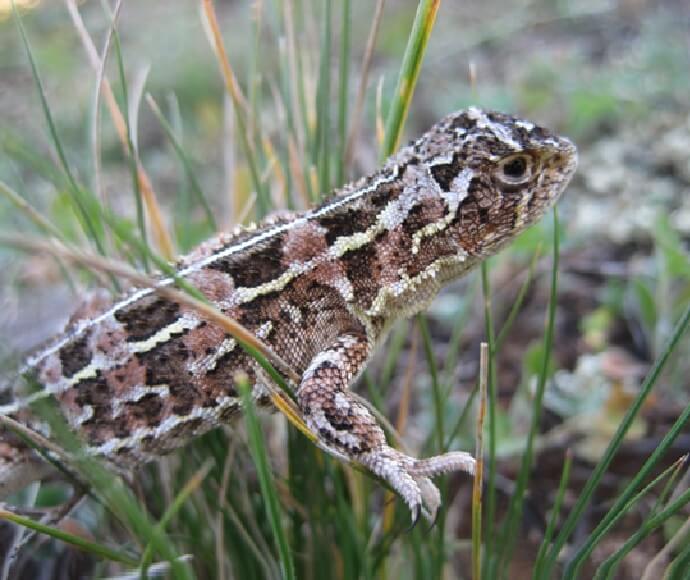
Paw patrol: the detection dogs sniffing out a silent killer
There’s always a bad guy on the block, and this time it’s a soil-borne disease called Phytophthora cinnamomi that’s causing havoc in our environment. But the National Parks and Wildlife Service is deploying its newest park – or should we say bark – rangers to detect this threat quicker than before.
Introducing Alice and Echo. The ‘ruff’ and tough springer spaniel and Brittany spaniel have expertly trained snouts to detect this threat. It can cause disease in thousands of native plant species, permanently damaging ecosystems and destroying habitat for native wildlife including the southern brown bandicoot and smoky mouse.
These 2 pups have been training their little snouts for the past 12 months and can confidently distinguish between infected and non-infected plants in a controlled environment. They are now working on detecting the pathogen in more complex situations including in national parks and nurseries, as well as on vehicles.
The 2-year project has been made possible by Saving our Species along with NSW National Parks and Wildlife Service, Tate Animal Training Enterprises, Royal Botanic Garden Sydney Plant Clinic, University of Sydney and Northern Beaches Council.
Read more about these detection dogs and watch them in action.
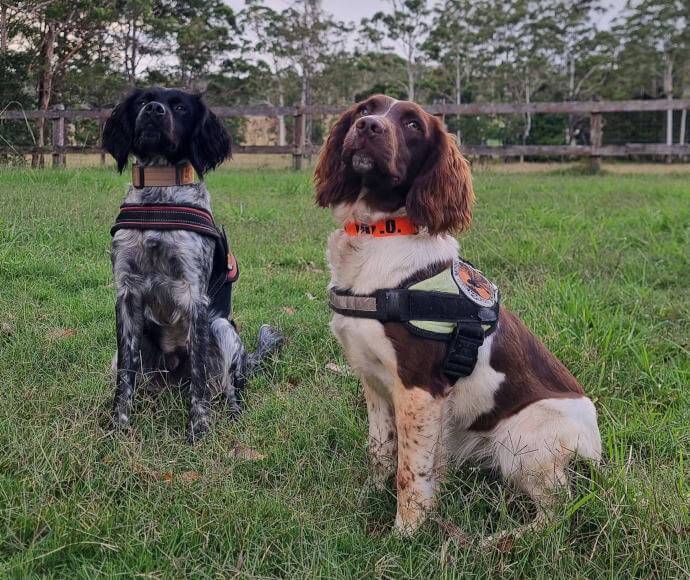
One of Australia’s rarest birds gets a population bolster
Once a common sight from Queensland to Victoria, the eastern bristlebird (Dasyornis brachypterus) has a population of fewer than 2,500 birds in the wild. But thanks to 18 years of research, the northern-most population of one of Australia’s rarest birds, with an estimated size of fewer than 50 birds, just got 13 new squad members. A cutting-edge conservation technique known as ‘genetic rescue’ was used in a bid to turn the tide on eastern bristlebird extinction.
Released into the wild in early 2023 within the Border Ranges area, monitoring has shown that the birds are doing well and have been exploring their new home. Some of the birds have even been observed foraging and interacting with other wild birds. Longer term, they will be monitored as part of the annual census to understand the wild population’s status and how it is responding to ongoing habitat restoration.
The release of these birds is just one aspect of the broader eastern bristlebird recovery project coordinated by Saving our Species, in partnership with Currumbin Wildlife Sanctuary, NSW National Parks and Wildlife Service and private landholders.
Keep reading: Bristlebirds bolstered by release of captive-bred birds
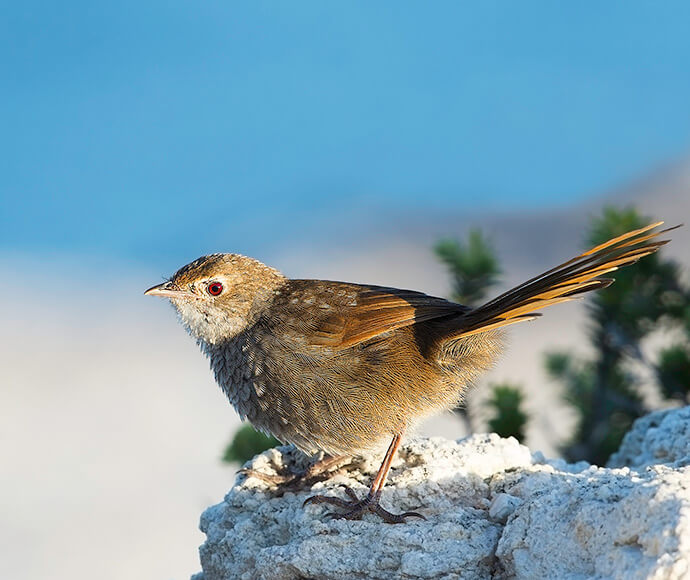
Hippity hoppity putting their best yellow foot forward
Every year, the Wangarru (the local Aboriginal name for yellow-footed rock-wallaby) survey is conducted across Mutawintji lands within the Mutawintji National Park, Mutawintji Nature Reserve and Mutawintji State Conservation Area. This year’s results found the population size of the endangered species (Petrogale xanthopus) is at a record high of 299!
Once widespread throughout ranges of South Australia, western New South Wales and into south-western Queensland, the NSW yellow-footed rock-wallaby population is now only known to be found on Mutawintji lands north-east of Broken Hill.
The survey has been conducted every year since 1980 via helicopter and is one of the longest running aerial surveys in New South Wales.
Culturally significant to the local Aboriginal community, these surveys are driven by the Mutawintji Board of Management and the Aboriginal owners and NSW National Parks Wildlife Service staff with the support of Saving our Species. The conservation of the yellow-footed rock-wallaby is also supported by the team through careful land management and pest control.
Keen to know more? Hop over to the yellow-footed rock-wallaby profile.
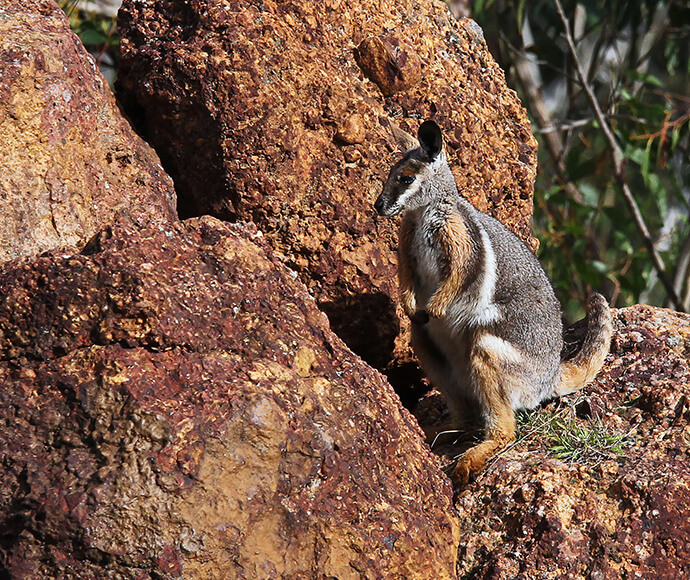
The comeback of the century: the rediscovery of a thought-to-be-lost grass species
Thank goodness some experts hiked a mountain for just one more look!
After a slow and sweaty summer stroll up a mountainside, Saving our Species threatened species experts, both current and recently retired, rediscovered a population of the critically endangered Budawangs wallaby grass (Plinthanthesis rodwayi) on Mount Currockbilly in south-eastern New South Wales. It was the first sighting in nearly half a century, after it disappeared from the mountain in the late 1970s.
Another epic outcome for this grass species was the dramatic recovery of the nearby Mount Budawang population after the 2019–20 bushfires. At least 100,000 grasses germinated in 2021 after high rainfall, and from this fruitful influx, a large amount of seed was collected and added to the Australian PlantBank seed collection at the Australian Botanic Garden Mount Annan.
This collection plays a vital role in the species’ survival, with Saving our Species working in partnership with the Australian PlantBank to safely store the seed, which may one day be used to increase the Mount Currockbilly population. Talk about the comeback of the century!
Keep reading: Budawangs wallaby grass bounces back.
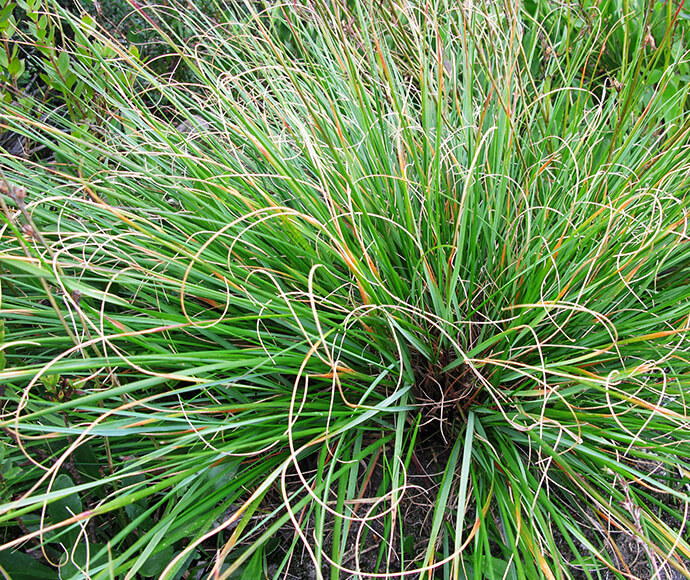
A dazzling distance achieved by critically endangered bird
Imagine starting a hike and winding up 350 kilometres away from your starting point. Well, that’s what happened for ‘OG-Bling’ – a critically endangered regent honeyeater (Anthochaera phrygia).
Bred as part of the conservation program led by Saving our Species, OG-Bling was one of 50 regent honeyeaters released in New South Wales in November 2022 in the lower Hunter Valley, on land owned by Mindaribba Local Aboriginal Land Council.
OG-Bling was spied and photographed in March and April this year by citizen scientists in Werakata State Conservation Area, near Kurri Kurri. He was then photographed north of Coffs Harbour at the end of July, indicating he’d made a record journey.
With an estimated 250 to 300 regent honeyeaters left in the wild, Saving our Species, together with Taronga Conservation Society Australia and Birdlife Australia are delivering a breed and release program to help bolster the population.
Discover more about these beautiful birds on the regent honeyeater profile page and watch them released into the wild.
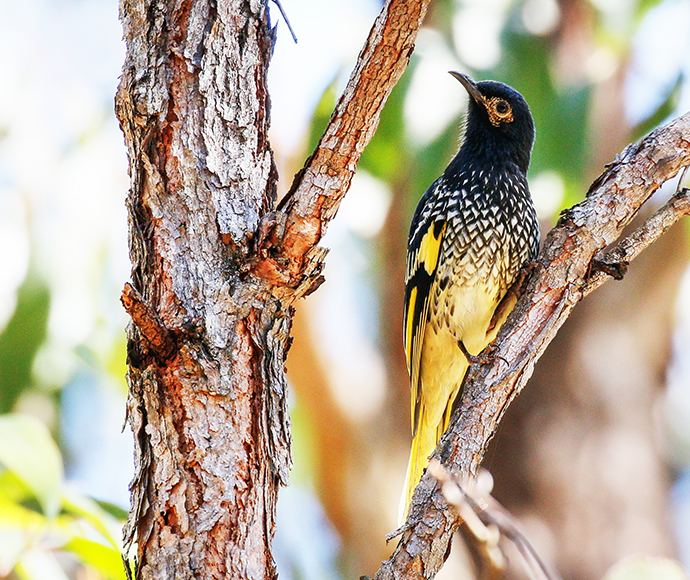
The hoppy little leapers who got an epic new home
The critically endangered southern corroboree frog (Pseudophryne corroboree) is perhaps Australia’s most iconic frog, but even iconic stars can use a helping hand avoiding extinction.
To protect these little leapers, Saving our Species has been helping to safeguard the population through the establishment of a large-scale captive breeding and insurance program, working with partners, Taronga and Melbourne zoos.
Early this year, 100 southern corroboree frogs were released into a field enclosure that was purpose-built by National Parks and Wildlife Service field officers in Kosciuszko National Park, bringing the total number of frogs released in the area to 200. Their hip new pad will protect the species from the deadly chytrid fungus, allowing the population to thrive in their safe habitat.
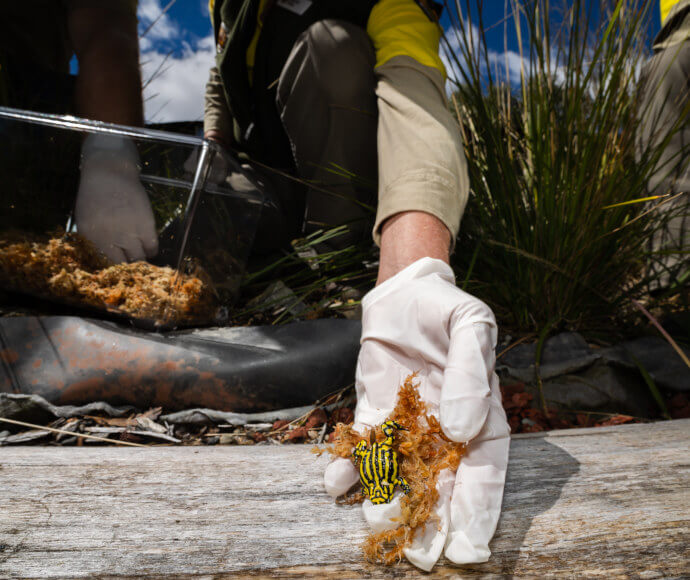
Super seedlings generate super result for critically endangered tree
From little things, big things grow.
Located in littoral (coastal) rainforest behind one of Australia's most famous surf breaks near Lennox Heads on Bundjalung country, a critically endangered species was on the brink of extinction. In 2010, cuttings were taken from the only remaining 10 adult coastal fontainea (Fontainea oraria) trees and used to plant a new population. Fast-forward to today, there are now nearly 6,000 trees, many flowering and fruiting, and producing more robust seeds than those from the original plants.
These super seedlings are more genetically diverse, which means they may be better able to cope with threats such as climate change, pests and diseases. This is known as 'genetic rescue'. To keep these seedlings thriving, some have been transferred to a local nursery where they are grown for future planting at suitable, safe sites.
The project is being delivered by Saving our Species in partnership with Bushland Restoration Services, Landmark Ecological Services, Royal Botanic Gardens, Ballina Shire Council, Firewheel Rainforest Nursery and local landholders. With such strong support and trees and seedlings now thriving, it is hoped that the coastal fontainea population will continue to flourish for generations.
Learn more about the critically endangered coastal fontainea.
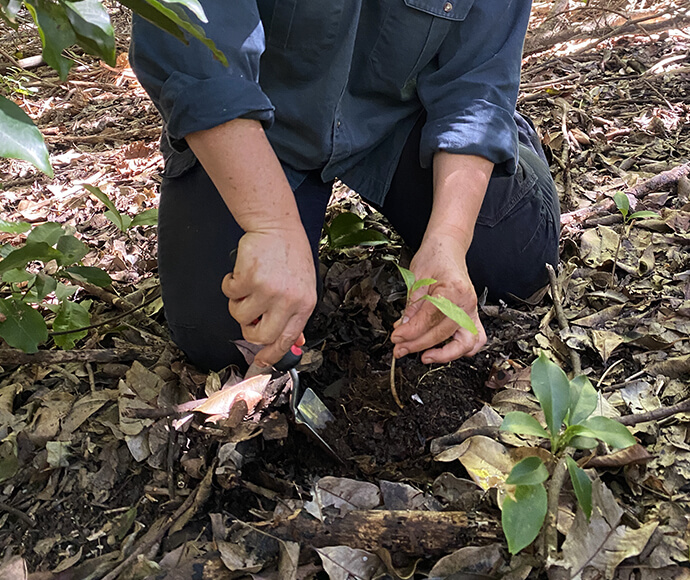
Teamwork makes the dream work
Teamwork makes the dream work is truly the defining phrase for the ongoing monitoring of the endangered Kangaroo Valley brush-tailed rock-wallaby (Petrogale penicillata) population.
Saving our Species and NSW National Parks and Wildlife Service, together with local volunteer group Friends of the brush-tailed rock-wallaby, have achieved great outcomes throughout 2022–23, recording a total population number of 42 adults across the 2 colonies.
During the monitoring period, the team hit the jackpot – a young male brush-tailed rock-wallaby called Yalonga. Finding Yalonga was a great opportunity for the team to fit the wallaby with a satellite collar so they could track his movements, leading to a better understanding of how young males disperse as they mature. The data will also provide insights into potential predator impacts.
Two other males were also collared and are being tracked. Over the course of the 2023 monitoring sessions at both Kangaroo Valley colonies, a total of 24 individuals were captured, checked and released, including 13 that had not previously been processed.
This is a fantastic boost to the long-term rock-wallaby monitoring program, helping to provide vital genetic material to the statewide conservation program.
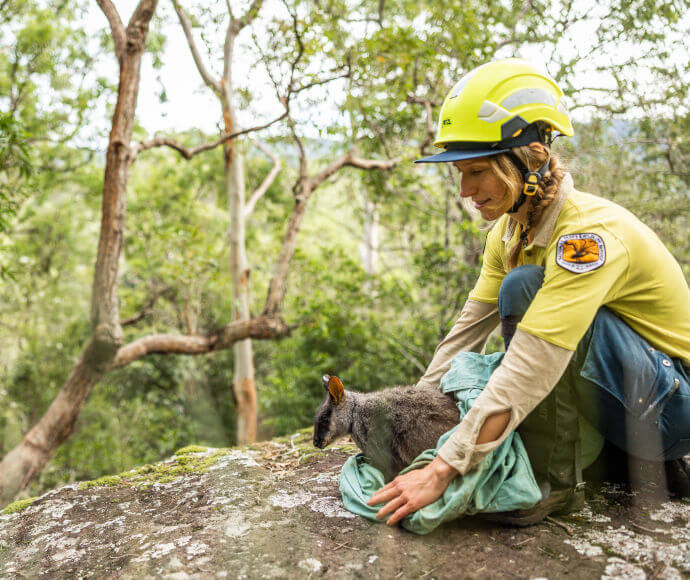
Citizen scientists help discover vulnerable species’ chicks!
For the first time in nearly 2 decades, citizen scientists discovered glossy black-cockatoo (Calyptorhynchus lathami lathami) nests on the mid-north coast.
What’s even more incredible is that 2 of the 3 nests had successfully fledged chicks! This is a huge win for the vulnerable species and the Biliirrgan Project, which aims to secure the future of these beautiful birds on Gumbaynggirr, Bundjalung, and Yaegl country in northern New South Wales.
There are glossy black-cockatoo programs across New South Wales striving to protect and conserve the species, from the Shoalhaven and south coast to the Pilliga Forest, Goonoo National Park and Goobang National Park.
Fly over to this vulnerable species’ profile to discover more.
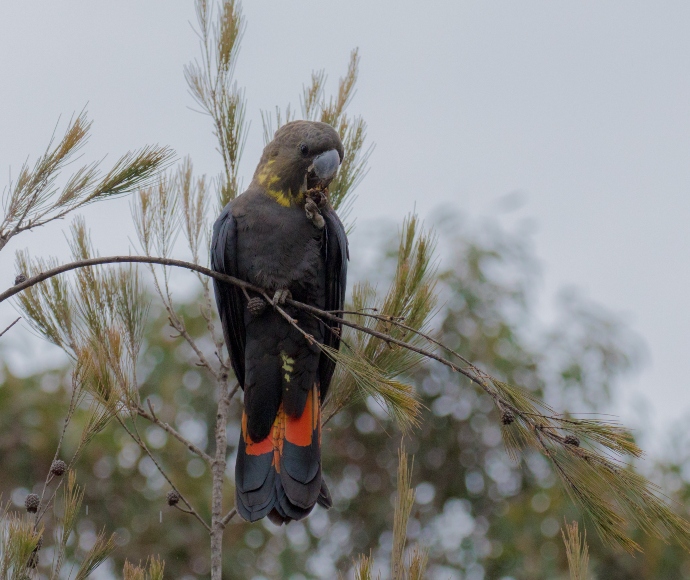
Mysterious species no longer hiding in plain sight
They always say the best place to hide is in plain sight, and this newly named eucalyptus species understood the assignment. The critically endangered Eucalyptus cryptica has finally been crowned with an apt new name after years of uncertainty around its status as a unique species.
Usually found in heath or low woodland in a small area in the Hills district in north-west Sydney, around Cattai Creek, on Dharug country, there are only about 700 to 800 individual trees in the area.
To help give these little hide-and-seek pros a fighting chance, trees have been planted in protected areas where the Saving our Species team and project partners can carefully monitor and manage the species survival. Now that the team have a name for this cryptic tree, they can continue to learn more about the species and understand how best to keep it safe for generations to come.
